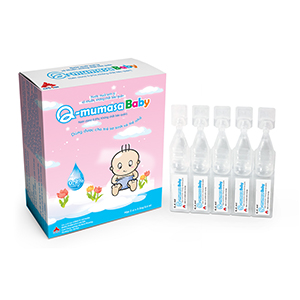
Email:[email protected]
Tel:+86 13482208428
EN


Application Of BFS Equipment In Single-Dose Eye Drops Packaging
Eye drops are sterile aqueous or oily clear solutions, suspensions or emulsions made of medicines and suitable excipients. They are ophthalmic liquid preparations for instillation. They have high local drug concentration. They are easy acceptance by patients, and convenient application. BFS Features are widely used in the treatment of eye and related diseases. The number and varieties of applying of eye drops are increasing year by year, and the packaging volume is also constantly changing.
From October 2011 to October 2013, Chen Wenfa, Department of Pharmacy of the Second Affiliated Hospital of Fujian Medical University, investigated and analyzed the packaging capacity of more than 38 eye drops in the hospital's outpatient department. One of the 38 eye drops is packaged in single-dose and 37 are in multiple-dose packages. The packaging capacity is: 0.4ml 1 kind, 2.5ml 2 kinds, 5ml 23 kinds, 8ml 5 kinds, 10ml 3 kinds, 15ml 4 kinds. The dosage analysis of 33 eye drops (excluding single-dose packaging varieties) (calculated as 1 drop=0.05ml), according to the requirements of the Pharmacopoeia of the People’s Republic of China that the drug can be used for up to 4 weeks after it is opened, there are 10 kinds of eye drops do not meet the requirements, that is, they cannot be used up within 4 weeks according to the constant use in the instructions.
Multi-dose packaging refers to a packaging method for multiple consecutive use. Single-dose packaging refers to a packaging method for one-time use of both eyes. Multi-dose packaging aims to prevent bacterial reproduction and ensure that the eye drops can be used safely multiple times. Most of the multi-dose packaged eye drops will be added with preservatives, such as benzalkonium chloride (BAK). Studies have confirmed that BAK has an effect on the surface epithelial cell population. Adverse reactions are more obvious after long-term use. In contrast, the new single-dose packaged eye drops without BAK can avoid adverse reactions. At the same time, due to the controllable dosage and high patient compliance, it has become a new packaging development trend.
Blow-fill-seal technology is Blow-Fill-Seal, referred to as BFS. This technology has been applied to the production of liquid medical products since the 1960s.
In FDA-GMP Annex 2, the blow-fill-seal (BFS) technology is an automated process through which containers are formed, filled and sealed in continuous operations. This kind of production technology includes effective utilization and reduction of human intervention in container sealing treatment, and is often used for filling and packaging ophthalmic and respiratory products.
In the EU Annex 1, the blowing, filling, and sealing system is a set of special mechanical equipment that operates continuously, from blowing a thermoplastic pellet into a container to filling and sealing. The entire process is completed by a fully automatic machine. The blowing, filling and sealing equipment used for aseptic production is equipped with Class A air shower device. Under the condition that the operator is dressed according to the requirements of Class A/B zone, the equipment can be installed in a clean environment of Class C. The blowing, filling, and sealing equipment used to produce terminally sterilized products should be installed in at least a Class D environment.
PDA Technical Report No. 77 introduces the usage of BFS equipment in pharmaceutical production. BFS technology has now been used to manufacture sterile pharmaceuticals, medical devices, biological, biological, and veterinary products.
